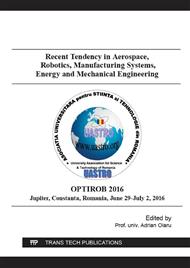p.41
p.47
p.53
p.59
p.65
p.72
p.77
p.83
p.91
Tolerance Design for Optimal Dimensional Quality of Machine Parts
Abstract:
The mechanical systems consist of assembled parts, between which diverse interactions take place. Tolerance analysis purpose is to study the effects of part geometric deviations on assembly functional requirements. In the current approaches from this field, the part geometrical deviations are toleranced without considering the evolution of the geometrical deviations during product exploitation. As consequence, between two parts identical as type but with different values of their geometrical features, inside the designed tolerance zones, any difference is made despite they might have significantly different life cycles or manufacturing costs. This paper presents a new conceptual approach concerning parts tolerance design, based on a new criterion, namely the dimensional quality, defined by two important features: life cycle and manufacturing cost. The main issue of this approach is the optimal relation between the manufacturing tolerance zones and the acceptable functional deviation domain. The new concept implementation is sampled in the case of an articulated arm.
Info:
Periodical:
Pages:
65-71
Citation:
Online since:
June 2016
Authors:
Price:
Сopyright:
© 2016 Trans Tech Publications Ltd. All Rights Reserved
Share:
Citation:


